Green architecture – Dali Museum, St. Petersburg, Florida
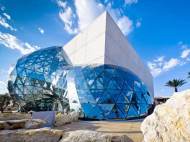 Located on a scenic waterfront site in downtown St. Petersburg, Fla., the 6,317 square-meter (68,000-square-foot) structure doubles the size of the original 1982 Dali Museum, a one-story warehouse. Exhibits include oils, watercolors, sketches, sculptures and other works from a 2,140-piece permanent collection. It stands more than 22.8 meters (75 feet) tall and is decorated by 1,062 unique, triangular glass panels.
Located on a scenic waterfront site in downtown St. Petersburg, Fla., the 6,317 square-meter (68,000-square-foot) structure doubles the size of the original 1982 Dali Museum, a one-story warehouse. Exhibits include oils, watercolors, sketches, sculptures and other works from a 2,140-piece permanent collection. It stands more than 22.8 meters (75 feet) tall and is decorated by 1,062 unique, triangular glass panels.
Internationally recognized architect Yann Weymouth, AIA, LEED AP, director of design for HOK’s Florida practice, led the design team. HOK’s design concept is drawn directly from the building’s purpose. It is inspired both by Dali’s surrealist art and by the practical need to shelter the collection from the hurricanes that threaten Florida’s west coast.
A 17.7 meter-high (58-foot-high), right-angled, Euclidean “treasure box” with thick concrete walls protects the art. This unfinished concrete box is disrupted by a flowing, organic, triangulated glass “Enigma” (also the name of a 1929 Dali painting) that opens the museum to the bay and sky while forming an atrium roof that draws in natural daylight. HOK used building information modeling (BIM) to create three-dimensional models of the glazing forms before Novum Structures imported the model into its proprietary software program and then engineered, manufactured and installed the Enigma and its glass sister, the “Igloo”.
In the exhibition galleries on the third floor, seven unique suspended black plaster “light cannons” funnel daylight onto the largest of the Dali masterworks. The art exhibition spaces are connected by a sculptural gallery that appears to magically land in the center of the ‘egg’ skylight, providing ample light and sweeping vistas overlooking Tampa Bay.
The building protects this priceless art collection from hurricane-force winds and water. The fortress-like structure is designed to withstand the 265 kilometer-per-hour (165 mph) wind loads of a Category 5, 200-year hurricane. The roof is made of 12-inch thick solid concrete and the cast-in-place reinforced concrete walls are 18 inches thick. Located above the flood plane on the third floor, the art is protected from a 30-foot-high hurricane storm surge. Storm doors shield the vault and galleries. Specially developed for this project, the triangulated glass panels are 1.5 inches thick, insulated and laminated, and were tested to resist the 135 mph winds, driven rain and missile impacts of a Category 3 hurricane.
Aside safety, the material will prove to be structurally efficient as well as inherently green with the capacity to reduce recurring embodied energy, possess high solar thermal performance, lower maintenance requirements and take advantage of long-term durability.
The building features Avant Gardens – a vertical garden of local Florida plants that sprout, along with small fountains of water, helping to increase the structure’s thermal performance. Landscape architect Phil Graham of Graham-Booth Landscape Architecture designed the grounds lush with flowering shrubs and trees dotted with Florida limestone slabs that suggest the primordial rocks of Dalí’s Catalonian homeland that he constantly painted into his landscapes.
Several sustainable design strategies create energy, water and cost savings. The building is sited to reduce solar load from the low-angled western sun. Two types of solar collectors on the roof heat water for the restrooms and assist in the dehumidification cycle of the air conditioning system. LED lighting lowers the electrical energy consumption. Automated controls turn lights off automatically when rooms are not in use.
Water is conserved with low-flow fixtures and all water condensate is recycled back into the system. The building envelope is compact, well-insulated and, with its concrete thermal mass, acts as a heat sink to reduce the temperature highs and lows of a typical day.

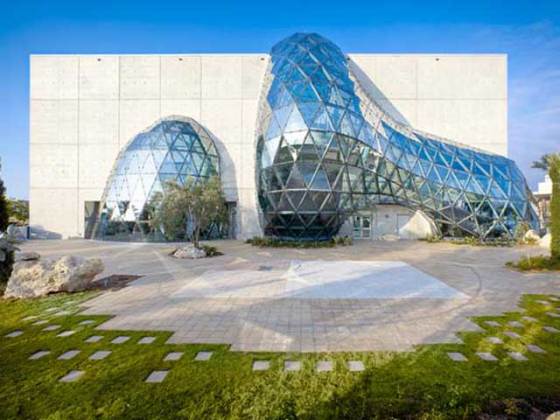
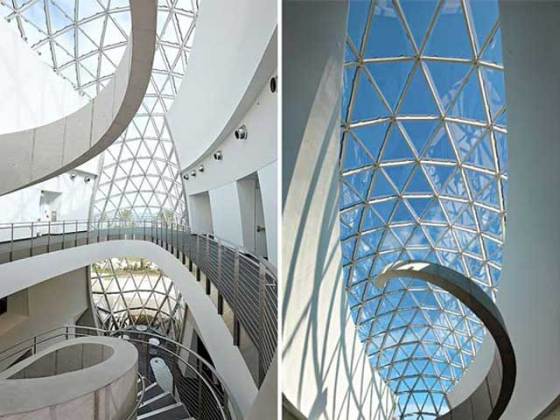
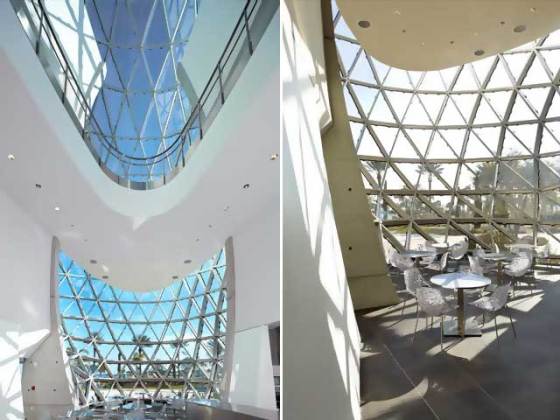
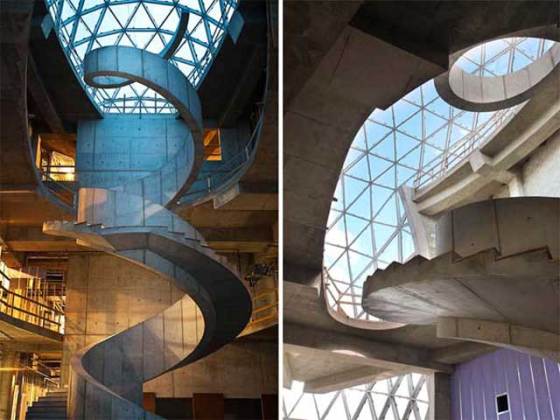








Leave your response!